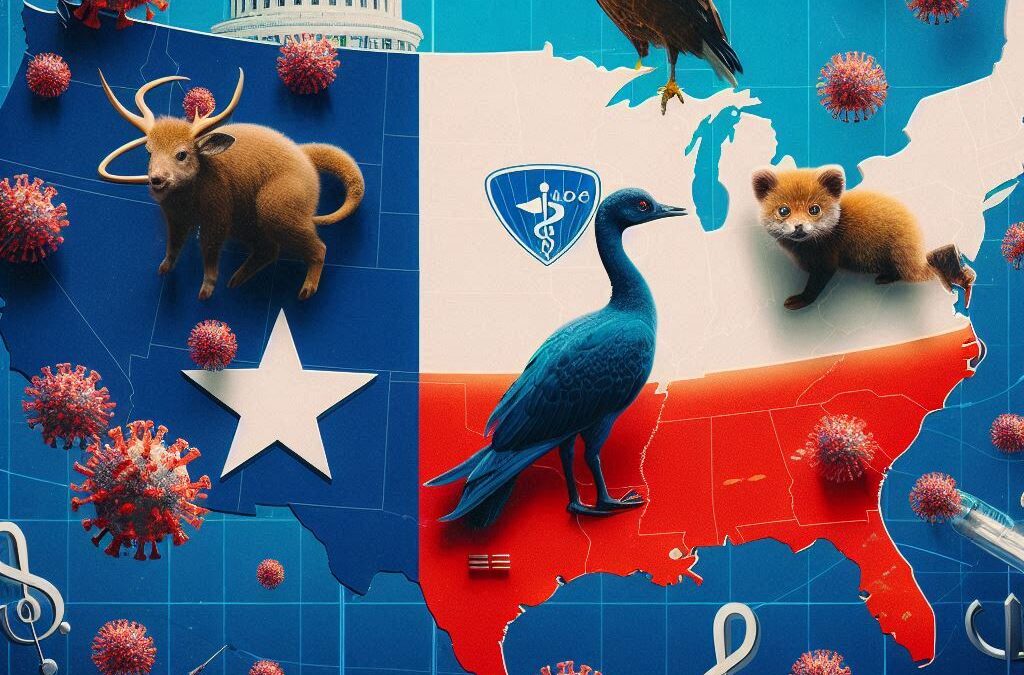As the United States contends with a growing number of infectious disease threats in 2025, two names dominate headlines and hospital rounds alike: measles and H5N1 bird flu. From a spike in measles cases in Texas to rising fears of bird flu transmission among mammals—and possibly humans—America is facing a critical moment in public health. Yet, this moment comes at a time when the Centers for Disease Control and Prevention (CDC) is facing unprecedented funding and staffing cuts.
A Surge in Measles Cases
As of April 2025, the U.S. has reported more than 800 measles cases, with Texas and New Mexico bearing the brunt of the outbreak. These cases are not isolated: they reflect a broader erosion of herd immunity. According to the CDC, over 96% of these cases are among unvaccinated individuals or those with unknown vaccination status.
In response, physicians like Dr. Helen Jiang, a Texas pediatrician, have begun administering the MMR vaccine to infants as young as six months—well before the typical vaccination age. “We can’t wait. Measles is here now,” Jiang stated in an interview.
The CDC deployed emergency response teams to Texas, but broader support has been lacking. Plans to assist schools in curbing the outbreak were scrapped due to internal layoffs, highlighting the ripple effects of deep budget cuts.
Bird Flu on the Rise—and Spreading
While measles is making a human comeback, the H5N1 bird flu is quietly spreading across poultry, dairy cows, sea lions, and other wildlife. Although no widespread human transmission has occurred yet, health officials are concerned.
So far, dairy and poultry workers in direct contact with infected animals have tested positive for H5N1, and virologists are monitoring how the virus behaves in mammals. According to Harvard Medical School, the virus’s adaptation in animals could increase the likelihood of human-to-human transmission—a terrifying prospect with echoes of 2020.
Compounding the concern is the CDC’s recent decision to halt regular updates on their bird flu response. Public health watchdogs and epidemiologists have called on the agency to release more data, especially as the virus continues to appear in more animal populations.
The Cost of Cuts
The timing of these outbreaks couldn’t be worse. In the past year, the CDC has suffered from over $11 billion in federal funding cuts—a move that has not only weakened its Long COVID response but also forced the closure of key departments, such as its STD Laboratory Reference and Research Branch.
These reductions have resulted in critical staffing losses and reduced the CDC’s ability to act quickly and effectively in the face of fast-moving outbreaks. CDC scientists and former officials have raised alarms, warning that the United States is losing ground in its disease surveillance capabilities just when it’s needed most.
Public Trust and Public Risk
Beyond the direct impacts on containment and care, these cuts have led to diminished public trust in federal health agencies. Inconsistent messaging, a reduced presence in communities, and limited transparency have only widened the gap between medical professionals and the public.
Vaccination hesitancy, fueled by misinformation and declining institutional credibility, remains one of the biggest threats to outbreak control efforts. Without robust public health communication and consistent funding, preventable diseases like measles are making a dangerous comeback.
Where Do We Go From Here?
The current public health landscape is a cautionary tale. As new infectious threats emerge, the U.S. needs more than just reactive policies and patchwork responses. It needs renewed investment in infrastructure, research, and community education. The CDC, despite its challenges, remains the backbone of national disease control—and weakening it now endangers everyone.
To move forward, federal and state lawmakers must:
-
Restore CDC funding to ensure a rapid and thorough response to current and future threats.
-
Invest in community-level outreach, especially around vaccination and prevention.
-
Rebuild public trust through transparency and consistent health messaging.
Conclusion: A Call to Awareness and Action
Measles and bird flu are not just regional health scares—they are national wake-up calls. In an age where viruses can jump from animals to humans and misinformation spreads faster than facts, the U.S. cannot afford to turn a blind eye to the cost of neglecting public health.
We must choose now: either strengthen our defenses or risk being blindsided by the next wave.

